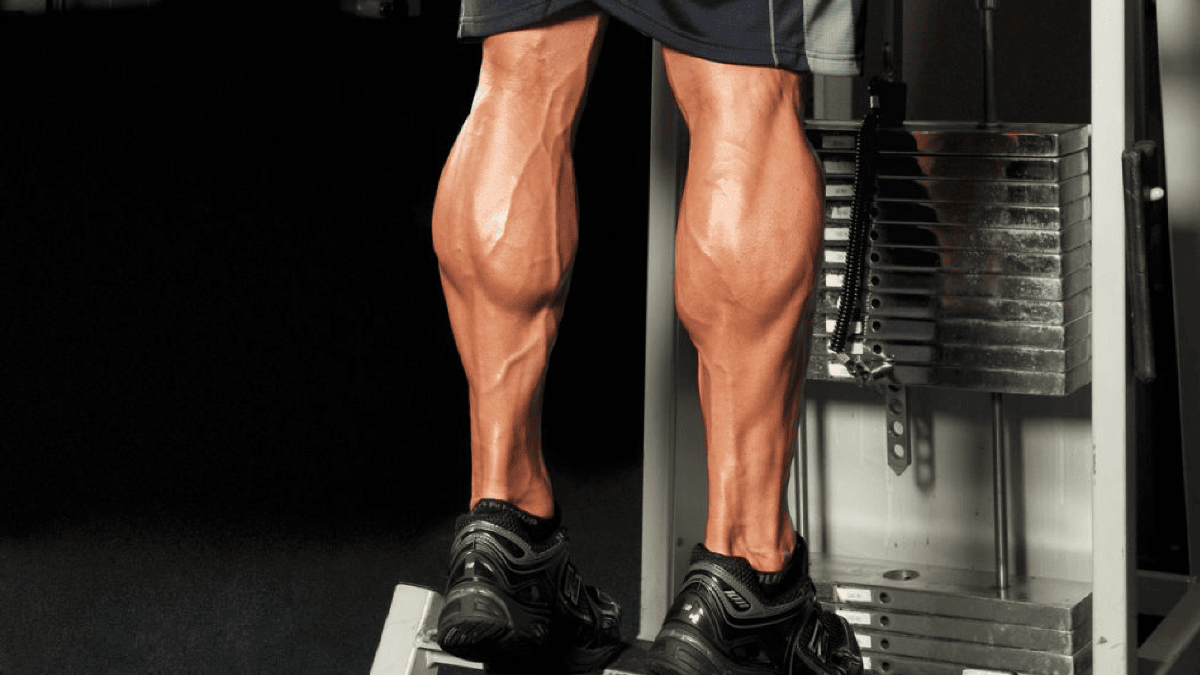Strengthen Your Calves: Choose Between Donkey Calf Raises and Standing Calf Raises

To be frank, calf muscles often get overlooked as unsung champions in fitness centers. However, developing robust calves isn’t just about aesthetics; they play a crucial role in activities like running, jumping, and maintaining balance in your legs. Therefore, our aim today is to explore the most effective methods of training these underappreciated powerhouses.
We have two well-liked options: Standing Calf Raises (which you might be familiar with) and Donkey Calf Raises (possibly not as widely known, yet highly efficient). On the surface, each involves raising your heels to target that muscle group. However, there’s a slight variation at play here!
Get Acquainted With Your Main Muscle Groups: The Gastrocnemius and the Soleus
Before we get started with the exercises, let’s briefly recall what we’re working on. Your calf muscles primarily consist of two main parts:
The Gastrocnemius: This prominent and easily noticeable muscle creates the rounded shape often referred to as the "ball" of your calf. It plays a crucial role in explosive actions such as leaping.
The Soleus: Positioned directly under the gastrocnemius, this muscle is primarily built for endurance. It plays a vital role in activities like walking and standing.
They usually function jointly during most ankle movements; however, varying positions might place slightly more focus on one over the other.
Exercise 1: The Standing Calf Raise (The Traditional Choice!)
This is the most typical and direct workout routine you will encounter in any gym or perform at your place.
To perform this exercise: Start by standing up, preferably with the front part of your feet resting on a stair or raised platform to increase the movement range. Ensure your body remains straight with an erect spine. Drop your heels down as far as you can to extend your calf muscles, then lift yourself onto the tips of your toes, contracting your calves fully at the peak position.
Emphasis on Muscle (As per the information provided): This variation reportedly places additional focus on the Soleus muscle.
Variations include performing it on particular equipment, using dumbbells or a barbell, or relying solely on your own body weight.
Main Point: Manage the motion during both ascent and descent. Avoid bouncing. Experience the stretch fully when you reach the lowest point and feel the squeeze at the peak position.
Exercise 2: The Donkey Calf Raise (The Eccentric One!)
The term "Donkey" originates from the old method of performing this exercise, where an individual (or a device) would sit or lean on your lower back as you flexed forward.
What needs to be done: The main aspect is leaning your upper body slightly forward. Hinge at the hips with your legs mostly extended, placing your palms firmly against an object such as a Donkey Calf Raise apparatus, a rail, or perhaps have someone trustworthy sit on your lower back for added support! Execute the calf raise similar to how you would when standing—let your heels drop down until they feel stretched, then push up onto the balls of your feet while contracting forcefully.
Muscle Highlight (Based on the information provided): When the body is tilted forward, this variation enhances the engagement of the Gastrocnemius muscle somewhat.
Variations: The most frequent version involves using a particular Donkey Calf Raise apparatus. Alternatively, it can be performed by resting on a bench with weights placed across your shoulders.
Main Point: Maintain a straight back with a bend at the hips; avoid curving your spine. Pay attention to the motion in your ankles and calf muscles.
Therefore, which one should you pick? The encouraging part is that you aren’t required to choose at all!
The intriguing aspect here is that both of these workouts excel at building your calf muscles. Compared to the distinctions in muscle focus noted—slightly more engagement of the soleus versus slightly more activation of the gastrocnemius—the difference becomes minor when contrasted with an exercise such as the seated calf raise performed with a flexed knee, which targets the soleus significantly more.
To ensure comprehensive calf growth, it’s best to incorporate diversity. You may switch between these two workouts on separate days, or integrate both into the same session.
If you have access to a Donkey Calf Raise machine, give it a shot! It offers a distinct experience and targets your calves from a somewhat different perspective.
If you only have access to weights or just your own body weight, standing raises can be highly effective and convenient exercises.
In both scenarios, the crucial aspect is technique: execute each movement through its complete range of motion, descend gradually to experience the full extension, and ascend forcefully to achieve peak contraction at the summit. The key factors for developing larger and stronger calf muscles are consistency and progressive overload—gradually increasing either the load or the number of reps as you progress.
Now you understand that both the Donkey Calf Raise and the Standing Calf Raise are essential assets in your quest for robust and sculpted leg muscles. Instead of seeing them as competitors, view them as partners! If you have never attempted the Donkey version, consider giving it a shot. And if you’re already performing standing calf raises, ensure you dedicate sufficient focus and effort to these exercises. You'll notice improved definition and strength with each stride!

Post a Comment for "Strengthen Your Calves: Choose Between Donkey Calf Raises and Standing Calf Raises"